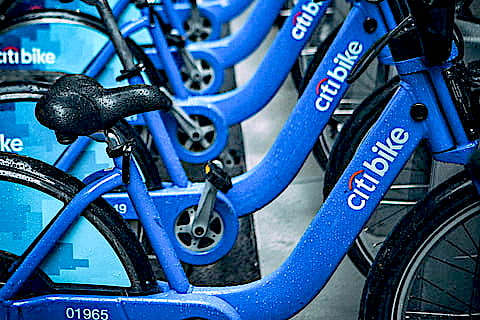“Carbon intensity” and reductions in “overall greenhouse gas emissions” are two very different things, writes Alec Connon.
I was recently reading a copy of my local paper, The Seattle Times when I stumbled across a full-page advertisement for Bank of America. The commercial, which had commandeered the entire back page of Washington State’s most widely-read paper, boasted about how Bank of America is on track to manufacture all of its credit and debit cards from recycled plastic by 2023. Such a move, we are told, will reduce single-use plastics by 235 tons a year.
This sounds quite impressive and, don’t get me wrong, I am all for reducing plastic usage; the fact that there may soon be more plastics than fish in the oceans is a tragedy. However, Bank of America’s bragging is less impressive when you consider that we produce over 300 million tons of plastic every year; 235 tons is but a tiny drop of the plastic in the ocean.
The real problem with the ad isn’t the insufficiency of the actions it advertises, though. It’s the purpose of the commercial.
In 2021, Bank of America provided more than $31 billion in financing to the fossil fuel industry. Funnily enough, the ad — which pointed to their recycled card initiative as evidence that Bank of America is helping to “shape the low-carbon, clean energy future we all want” — made no mention of the bank’s fossil fuel funding.
Donate to Consortium News‘
2022 Spring Fund Drive
Of course, it didn’t. The whole purpose of the ad is to con people into thinking that Bank of America is a responsible steward of the environment when, in reality, it’s deeply complicit in climate breakdown.
A little over a year ago, the International Energy Agency released the world’s most comprehensive study on what it will take to give us a fighting chance of achieving the Paris Agreement goal of keeping global warming to below 1.5°C.
The IEA’s headline-capturing finding was that the opening of new oil and gas fields is incompatible with that goal — and therefore neither governments nor private companies should invest a single additional dollar in the development of new oil or gas operations.
Yet, last year, Bank of America provided $8.3 billion to the 100 corporations that are most aggressively opening new oil and gas fields. This financing will cause far greater harm than the fact their bank cards are made out of non-recycled plastic.
Bank of America is far from the only major bank engaging in such greenwashing. Citigroup, which relative to market capitalization is the world’s largest funder of coal, oil, and gas, has partnered with New York City to provide a bike share scheme for the city’s residents. Why? So that when you think of Citigroup, you think of bicycles, not coal-fired power plants — even though it spends billions more on coal plants than bikes.

(Piqsels)
More worryingly, Wall Street’s greenwashing extends to its actual climate policies.
In the past year, the six largest U.S. banks released their 2030 climate targets and pledged to reduce the climate pollution associated with their lending to the fossil fuel industry. Four of those banks, Chase, Bank of America, Morgan Stanley and Goldman Sachs made their pledges using a convoluted accounting trick known as “carbon intensity,” pledging that by 2030, they will achieve anywhere between a 15-29 percent reduction in the “carbon intensity” of the oil and gas firms they finance.
But here’s the catch: “carbon intensity” and reductions in “overall greenhouse gas emissions” are two very different things.
Imagine you are the CEO of an oil firm. Your company owns 500 oil wells; it doesn’t own any windmills. Now Chase gives you a $1 billion loan. You use that loan to buy 100 new oil wells and 50 windmills. You now own 100 additional oil wells. This means you are digging up and burning more oil than ever before; your overall contributions to climate change have gone up significantly.
But because you are now also profiting from wind power, the “carbon intensity” of your company has gone down, a trick that enables your company to simultaneously cause more damage to the climate and meet Chase and Bank of America’s callow climate targets.
It’s worrying that Wall Street’s marketing departments aren’t the only ones falsifying the bank’s climate credentials. But whether you are looking at a bank’s full-page ad in your local paper or assessing its climate policy, there is one key litmus test: If it isn’t talking about ending financing for the expansion of fossil fuels, it’s almost certainly greenwashing.
Alec Connon is the coordinator of the Stop the Money Pipeline coalition, a coalition of over 160 organizations working to stop the flow of money from Wall Street to the fossil fuel industry. He is also a writer. His first novel, The Activist, was published in 2016.
This article is from Common Dreams.
The views expressed are solely those of the author and may or may not reflect those of Consortium News.
Help Us Beat the Censors!
Donate to Consortium News‘
2022 Spring Fund Drive
Donate securely by credit card or check by clicking the red button:


“when you think of Citigroup, you think of bicycles, not coal-fired power plants”
Those bikes need a sticker that reads “While you’re pedaling, Citigroup is peddling investments in fossil fuels.”
The reason corporations like the global warming movement is that it takes the emphasis off of pollution, which is their fault and is solvable, and puts it on “climate change”, which is not definable or solvable and deflects blame from industry to the people – the victims of their pollution. And since it’s the fault of people consuming they can justify the population reductions they’ve always wanted. And by population reduction they mean elimination of certain demographics. And that is just the old eugenics program they’ve wanted to revive since Hitler went too far and spoiled the party.
Focusing on ‘green-washing’ misses what the laws of physics & thermodynamics dictate: that ‘renewable’ energy electricity generation machines such as windmills, solar panels, tidal barriers etc., can’t be built with electricity powered machines, neither can batteries be built, nor copper produced, nor cement, steel, silicon, mining and refining dozens of critical metals, and agriculture, all rely ENTIRELY on high energy density fossil fuelled machines to build everything, factories, roads, mines shipping, and heavy transport, the lot: 85% of global energy is fossils, c2% windmills, 1% solar panels, with nuclear at 4%, and hydro 2.5%, nearly all the rest is burning wood and dung etc.
Meanwhile, batteries are already close to the maximum energy density the laws of physics allow. And existing electricity powered machines can’t do this work because batteries are 5 or 10 times heavier (i.e. less energy dense) than diesel (per unit of work done by machines), and can’t be recharged at remote mining locations. If this were not true, corporations would be falling over themselves already to build the so-called ‘renewable energy’ future, that climate science founder James Hansen warned decades ago is a mythical “tooth fairy”.
Thus in reality urging banks’ to de-fund from fossil fuel extraction means advocating – whether knowingly or not – for rapid de-growth back c150 years to pre-fossil age populations and average wealth, health & life expectancies.
Plus, fossil fuels are running out anyway – peak oil – so we face this future anyway. Perhaps a wiser question to focus on is how to best manage the inevitable ‘access-to-energy’ collapse, which humans now face, as civilisation withers and shrinks in the coming c150 years to perhaps a quarter of the 8 billion people alive today?
AND, “here’s the OTHER catch:
GO Fund It! the US/NATO vs. Russia War, in Ukraine.
GO Figure, the dementia addled, truth-challenged, war mongering, Joe “NATO’S ULTRA EXPANSIONI$T, Biden, under the gun, to “get ‘er done.”
The Party of War IS ALL In (219-0). Both sides of the aisle, “Got ‘Er Done,” Build Back Better, Ukrainian $tyle:
* $6 billion to pay the salaries of the Ukrainian military, including its fascist Azov Battalion.
* $9.05 billion to replenish US weapons deployed to Ukrainian military.
* $3.9 billion for “mission support and intelligence” support and to deploy additional US military equipment to Eastern Europe, including a Patriot missile system.
* $600 million “for faster missile production” in the US.
* $500 million “to procure critical munitions to increase the stocks of the Department of Defense.”
* $4 billion to “build and update” the military capacities of NATO powers in Eastern Europe.
* $200 million to update the US Embassy in Kiev.
* $400 million to fund the Ukrainian police.
CHECKOUT….Total, to Date: Fifty-Three BILLION ($53 BN).
NETFLIX’ Science Fiction Project, “Biden-Harris,” The Nightmare on Main $treet, LIVES! Their plotted “plan,” deception, destruction and death.
I think you are missing the point by focusing on the carbon numbers. That is what the financial community wants you to do, they are making a lot of money off of it because the numbers are a bit jaded (dig a bit deeper into it) and further, focus on these numbers creates more harm to the environment and discourages gov’t regulations, which are the only thing that will change the course of corporates. Look at BP – they reduced their emissions and carbon intensity by divesting some assets. Those emissions disappeared from public sight, but they still exists and in private hands/SEOs /PE the emissions will actually be worse. This was done the appease the carbon counters out there and activists that don’t understand the 2nd and 3rd oder effects. Its not only carbon intensity but also reduced carbon that have distorted accounting. Carbon-offsets is a major growth market, even if the same “protected” lands are deforested and each auditors report shows its not working, look at the Norwegian Auditors Reports. Wall street works generally within the rules of the system (gov’t) and makes tiny concessions to ward off regulation. Shift the conversation to the security of energy supply and realistic solutions, curtailing demand, and what to do about the brunt of future carbon emissions, the developing world, instead of turning off oil and gas. I look at universities, funding doctoral programs, to figure out how to allocate money for innovation (huge part energy transition) yet not a single government or company has increased their R&D budgets in energy besides battery tech.
With Investors betting on Futures it doesn’t matter if the climate gets better or worse they still stand to make a profit.